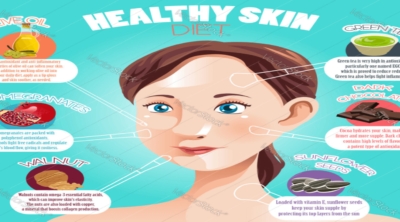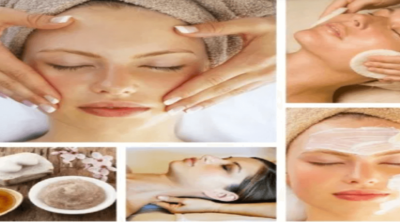
Vitamin A benefits for skin have always been known to include remedying stretch marks, scars, liver spots, wrinkles, psoriasis and also keeping skin cancer at bay. But now you can successfully use derivatives of vitamin A for acne treatment to keep those ugly eruptions at bay. Find out how vitamin A works to keep your skin clear, radiant and blemish-free.
Elizabeth Hurley once said, “A bit of lusting after someone does wonders for the skin.” Today, I shall take the liberty and add “And so does using vitamin A” to her sentence. Well, the goodness of vitamin A is definitely nothing new and everybody knows how it works in favor of the entire body. It works to strengthen our ocular faculties and shields us against nyctalopia, it boosts the cardiovascular health and also keeps the cholesterol levels in check among myriad other functions.
But vitamin A is also very good for skin health and it actually reverses the effects of multiple skin problems. Vitamin A is known for remedying issues such as wrinkles as it acts as an antioxidant that limits the action of free radicals from raging havoc. Besides this, it helps in diminishing liver spots, stretch marks and scars, healing skin diseases such as psoriasis and also eliminating cancer risks (a property of beta-carotene). Finally, one can also use derivatives of vitamin A under the supervision and guidance of a medical practitioner. So, how is this done? We shall find out in the following paragraphs.
Using Vitamin A for Acne Treatment
Experts believe that a deficiency of vitamin A may lead to acne. This is because this vitamin is believed to service the largest organ of the body, the skin, in multiple ways. For starters, it limits excessive secretion of sebum, one of the biggest culprits for causing acne. It also mends and conserves the skin tissue, rendering it strong, so as to prevent arbitrary eruptions. Thirdly, vitamin A happens to be one of the best antioxidants known to man and therefore it inhibits the tantrums of free radicals, which in turn strengthens the immune system and aids the eradication of acne-causing bacteria.
So, it is of optimal importance that one sticks to the recommended daily allowance or RDA of vitamin A which happens to be 2,310 IU for women and 3,000 IU for men. Now since there are multiple natural vitamin A sources, one can easily indulge in them 5 times a day. This will help your skin and other bodily functions as well.
Other than this, one can use vitamin A ointments topically and capsules orally to eliminate acne. How much vitamin A for acne treatment? Herein lies the catch. Research has proven that one needs to use 3,00,000 to 5,00,000 IU per day to cure acne. But the upper limit of vitamin A perusal mustn’t under any circumstances exceed 10,000 IU in one day, or it could lead to overdose. This means that you shall become exposed to dire physiological risks, which may include acute neural and hepatic damage.
People start experiencing severe headache and nausea and often the toxicity of vitamin A results in large proportion of the vitamin getting stored in your body. This is because the vitamin A is a fat soluble vitamin and this means that excessive doses of it don’t get discharged from the body in the form of urine, as it isn’t water soluble. Retention of such high amounts of vitamin A in the body triggers multiple other bodily problems.
So, if you are opting for such a treatment, then do not do so without a doctor supervising you. Even in such cases, doctors will recommend you to take non-synthetic vitamin A in doses of 300,000 IU for the first 2 weeks and then bring it down to 100,000 IU/day for 2 months. Also, one must try to divide the portions over the entire day and refrain from taking it all at once.
But nowadays, derivatives of vitamin A have been floated into the market. These retinoids are known as adapalene, isotretinoin, tazarotene, and tretinoin. Let us see them in some detail.
Adapalene
This retinoid is available in the cream and gel form and is to be applied topically in order to zap acne out of your life. Some experts take it to be more effective than tretinoin, and prescribe the patients to use it only once a day after washing the face with water and face wash, just before going to bed.
Isotretinoin
This is the most potent and the most expensive retinoid which is only given in case of the failure of all other acne treatment methods. Doctors do not prescribe it unless absolutely necessary, for it has a high tendency of inducing toxicity. Isotretinoin is taken orally and the dosage pattern is 0.5 mg/kg/day to 2mg/kg/day, distributed throughout a day, for the first 4 to 6 months, a gap of 8 weeks and then another course if absolutely necessary. This retinoid proves efficacious in cases of acute cystic acne and is a good derivative of vitamin A for removal of acne scars. It works by drying out the septic sebum and eliminating the infection as a whole.
Tazarotene
This is another retinoid that is available in the form of a gel. The application procedure is same as that of adapalene. Using moisturizers with this retinoid keeps dry and flaky skin at bay.
Tretinoin
Dermatologists use this retinoid most commonly for the treatment of acne, wrinkle removal and stretch marks removal. It is used in most anti-aging skin care products and harnesses the discoloration and damage caused by exposure to UV rays. It is available in the gel and cream form and is not given to patients with an overly sensitive skin.
No matter how effective these retinoids have turned out to be in the treatment of acne, one must NEVER use them without seeking the guidance of a good dermatologist. There are certain lifestyle changes that one has to adhere to when using these derivatives of vitamin A for acne. If you do not adhere to them, you will end up with severe retinol side effects, such as acute sunburn or torn epithelium or even pancreatitis in infrequent cases. So, why risk it. Personally, I feel that one must have food items rich in vitamin A, such as apricots, cheese, milk, romaine lettuce, pumpkin, cantaloupes, and others 5 times a day and that itself will show results. But if you must go the retinoid way, then do so under the steering of a dermatologist.
Disclaimer: This article is for informative purposes and is not meant to substitute the advice of a health care provider.


